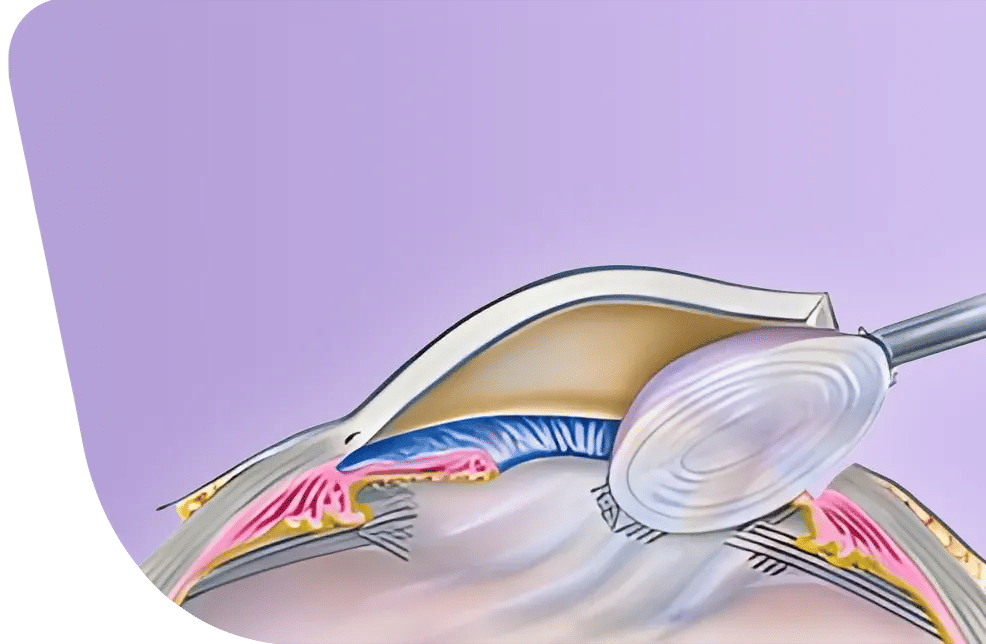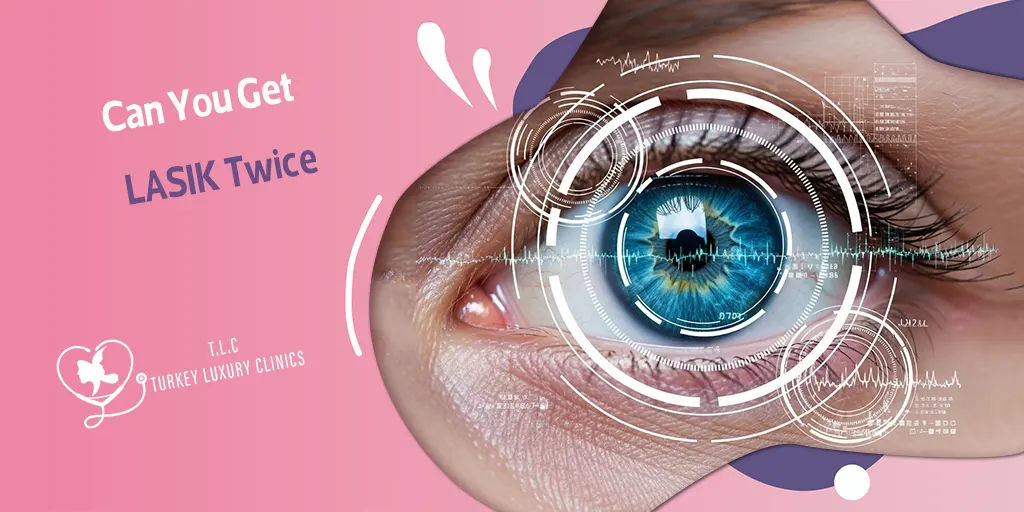- - How Long Does LASIK Last for Astigmatism?
- - Can Astigmatism Return After LASIK?
- - Can LASIK Be Done Twice for Astigmatism?
- - What Influences LASIK Success for Astigmatism?
- - What Influences LASIK Longevity for Astigmatism
- - Signs You Might Need a LASIK Enhancement
- - How to Maintain Long-Lasting LASIK Results for Astigmatism
- - Key Takeaways About How Long Does LASIK Last for Astigmatism?
- - FAQS About How Long Does LASIK Last for Astigmatism
LASIK Surgery for Astigmatism is a popular and preferred long-lasting solution that lets people enjoy clear vision without relying on glasses. It's supposed to provide a permanent vision correction, but is that really the case? LASIK permanently reshapes the cornea, but it doesn't stop the natural aging process or other eye changes. So, how long does LASIK last for astigmatism?
Discover with Turkey Luxury Clinics the durability and longevity of LASIK for astigmatism, what can affect the results over time, and when a follow-up or enhancement procedure might be needed.
How Long Does LASIK Last for Astigmatism?
The correction of astigmatism through LASIK is considered a permanent solution. LASIK works by permanently reshaping the cornea, correcting the refractive error caused by astigmatism. However, it does not prevent the development of other refractive changes that may occur later in life.
Vision stabilizes typically within 3 to 6 months after surgery. During this period, minor fluctuations in vision may occur as the cornea heals and the eye adjusts.
If the astigmatism is adequately treated and no regression is observed within three months after surgery, the results are generally stable and long-lasting. Long-term outcomes are very favorable, with over 94% of patients not requiring corrective lenses and fewer than 2% needing retreatment.
What Makes LASIK Results Permanent?
LASIK permanently reshapes your cornea, the front surface of your eye, to correct how light focuses on your retina, effectively treating the blurred vision caused by astigmatism. This correction is considered permanent for astigmatism itself.
However, some patients may notice minor changes in vision over time, which can occasionally require further evaluation or enhancement.
What Causes Vision Changes After LASIK?
Even after a successful LASIK procedure, vision can change over time. Most of these changes are due to natural aging, such as presbyopia, or other eye conditions like cataracts, and are unrelated to the original LASIK correction.
In rare cases, minor regression of astigmatism can occur. This might be caused by individual healing responses, incomplete correction, or other eye factors. If regression happens, a LASIK enhancement can often restore optimal vision.
Can Astigmatism Return After LASIK?
While LASIK results for astigmatism are generally permanent and long-lasting, minor regression can rarely occur. Although LASIK permanently reshapes the cornea, there is no guarantee that astigmatism will never return.
A slight return of blurry vision may happen over time, particularly in individuals with higher levels of astigmatism or nearsightedness before surgery, although this is uncommon.
Causes of Astigmatism Regression after LASIK
- Corneal healing response: In rare cases, excessive corneal tissue may grow back slightly over the years, leading to mild recurrence of astigmatism.
- Residual astigmatism or incomplete correction: Sometimes the original astigmatism is not fully corrected during surgery.
- Preoperative assessment issues: If the vision was not fully stabilized or pre-surgery refractive errors were not completely addressed, minor regression may occur.
Natural eye changes: Aging or other eye conditions can contribute to a slight return of astigmatism.
What to Do if Astigmatism Returns?
If regression occurs, vision can be corrected with glasses or contact lenses. In many cases, a LASIK enhancement procedure can be performed to retreat the cornea and restore optimal vision.
Can LASIK Be Done Twice for Astigmatism?
Yes, LASIK can be performed a second time for Astigmatism in a procedure called a LASIK enhancement. This is an effective solution for patients who notice minor vision changes years after their initial surgery, to correct residual refractive errors or slight regression.
Enhancements are usually done after vision has fully stabilized, typically 3–6 months after the first LASIK. The procedure is generally safe if the cornea is thick and healthy, and you meet candidacy requirements.
Your doctor will check factors like corneal thickness and overall eye health to determine if you’re a good candidate. Most patients achieve excellent results with a single enhancement, often restoring sharp vision without glasses or contacts.
What Influences LASIK Success for Astigmatism?
The success of LASIK for astigmatism is measured by how well vision stabilizes, usually within 3–6 months. During this period, the cornea heals, and clear vision returns, reflecting the immediate effectiveness of the procedure.
1. Severity of astigmatism: Mild to moderate astigmatism typically responds very well to LASIK. Severe cases can also be corrected, but results may vary.
2. Corneal thickness: A sufficiently thick cornea is necessary to allow safe reshaping without compromising corneal integrity.
3. Precision of treatment: Modern LASIK technology, including femtosecond lasers and customized smart systems, ensures precise reshaping of the cornea for optimal results.
What Influences LASIK Longevity for Astigmatism
While LASIK permanently reshapes the cornea, the long-term stability of astigmatism correction can be influenced by factors related to healing, corneal characteristics, and the precision of the procedure. Rare regression may occur, and key factors affecting LASIK longevity include:
- Type of Astigmatism: Regular astigmatism tends to respond more predictably to LASIK, leading to longer-lasting and stable vision correction. Irregular astigmatism may result in less predictable outcomes and a slightly higher chance of regression over time.
- Initial Prescription: Patients with mild astigmatism usually experience more stable and long-lasting results, while higher levels of astigmatism before surgery may slightly increase the risk of minor regression in the future.
- Corneal Thickness: Adequate corneal thickness is necessary not only for safe reshaping during surgery but also to maintain the structural integrity of the cornea over time. Thin corneas may limit the correction achievable and could affect long-term stability of vision.
- Age and Overall Eye Health: Younger patients and those without chronic eye conditions (such as glaucoma, dry eyes, or cataracts) or systemic diseases that affect healing generally experience more consistent and long-lasting results. Natural aging and ocular diseases can gradually alter vision, even after successful LASIK.
- Visual Habits: While extensive screen time or prolonged near work does not reverse the corneal reshaping achieved by LASIK, it can temporarily affect clarity due to eye strain. Consistent eye strain over time may slightly influence perceived stability of vision.
- Post-Operative Care: Proper adherence to your surgeon’s instructions, including the use of prescribed eye drops, attending follow-up visits, and protecting your eyes from UV exposure, is crucial to support the long-term stability of the results. Neglecting these measures can compromise healing and increase the risk of regression.
Signs You Might Need a LASIK Enhancement
If you notice your LASIK results fading, consult your eye surgeon to determine if an enhancement is needed. Signs that astigmatism may be returning include:
- Blurred or distorted vision affecting daily life.
- Difficulty focusing on near or distant objects.
- Visual disturbances like halos or ghosting, especially at night.
- Recommendations from your doctor during routine check-ups.
How to Maintain Long-Lasting LASIK Results for Astigmatism
1. Ensure your candidacy for LASIK eye surgery:
To be an ideal candidate and maximize both success and long-lasting results, you should be over 18, have a stable prescription, and be free from other eye conditions or refractive problems such as nearsightedness.
2. Ensure proper healing:
Proper healing is crucial for long-lasting LASIK results for astigmatism. Poor healing can affect outcomes. Follow your doctor’s aftercare instructions carefully, including:
- Rest your eyes: Minimize screen time and avoid bright lights during the first few days.
- Use prescribed eye drops: Follow instructions for steroids and antibiotics to prevent infection and dryness; use preservative-free tears as needed.
- Avoid eye rubbing: Especially in the initial days after surgery.
- Protect your eyes: Wear sunglasses to block UV light and avoid water or contact sports.
- Attend follow-up appointments: Essential to monitor healing and address issues like dryness or corneal changes.
3. Long-term maintenance:
To maintain your LASIK results, adopt a healthy eye lifestyle, protect your eyes from UV light and injury, manage screen time, maintain a balanced diet, and attend all regular eye doctor appointments. This helps preserve LASIK results for astigmatism and prevents other vision problems over time.
- Regular eye exams: Routine check-ups detect natural changes in vision early.
- Healthy lifestyle: Good diet, hydration, and avoiding smoking support lasting results.
- Manage eye health conditions: Conditions like diabetes can affect vision and LASIK longevity.
- Sun protection: Sunglasses shield your eyes from harmful UV radiation and support long-term eye health.
Key Takeaways About How Long Does LASIK Last for Astigmatism?
- Permanent Corneal Correction: LASIK reshapes the cornea to correct astigmatism, providing a long-lasting solution for most patients.
- Quick Stabilization: Vision typically stabilizes within 3–6 months after surgery, reflecting the immediate success of the procedure.
- High Success Rate: Over 94% of patients achieve clear vision without the need for glasses or contacts.
- Rare Regression: While uncommon, minor regression can occur due to healing variations, incomplete correction, or other eye factors.
- Vision Changes Are Usually Unrelated: Age-related changes, presbyopia, or cataracts may affect vision later, but these are separate from the original astigmatism correction.
- Enhancement Option Available: If regression happens, a follow-up LASIK enhancement can restore optimal vision.
You may like
How Many Times Can You Have a Corneal Transplant?
Smart Lens Surgery in Turkey 2025: Types, Costs and Results.
Diabetic Retinopathy Surgery in Turkey












.webp)
.webp)
.webp)
.webp)

